Training Your Pearl Cockatiel: Effective Techniques and Tips
Discover effective techniques and tips for training your Pearl Cockatiel, from creating a bond to teaching tricks, ensuring a well-behaved pet.
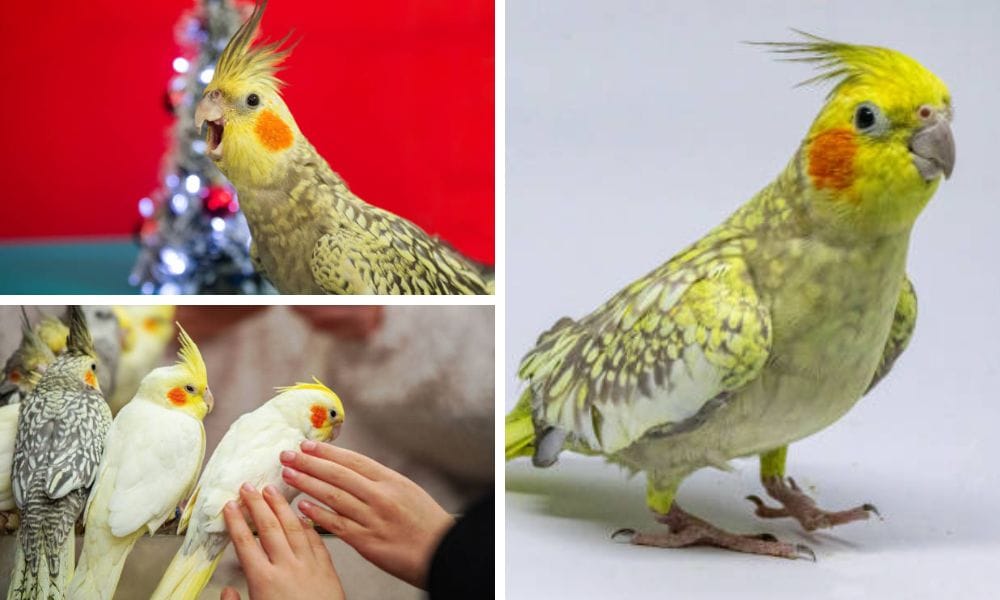
Key Takeaways:
- Learn the essentials of training your pearl cockatiel, including understanding their unique traits and behaviors.
- Discover practical techniques for effective communication and bonding with your feathered friend.
- Gain insights into maintaining the health and happiness of your pearl cockatiel through proper care and training.
Pearl cockatiels, with their striking patterns and docile personalities, are a favorite among pet bird enthusiasts. Training these birds requires patience, understanding of their behavior, and the use of positive reinforcement techniques. In this comprehensive guide, we'll explore the most effective methods for training your pearl cockatiel, ensuring a rewarding experience for both you and your pet. Enjoy reading!
Understanding Pearl Cockatiels
Pearl cockatiels are a color mutation of the standard grey cockatiel, part of the cockatoo family. They are known for their beautiful markings, which include a pattern of golden pearls across their grey feathers, and sometimes light blue gray feathers or a yellow white bird appearance. The males lose the pearl patterning after their first molt, often resulting in a more standard grey colors with white wing bars, while females retain their intricate patterns throughout life.
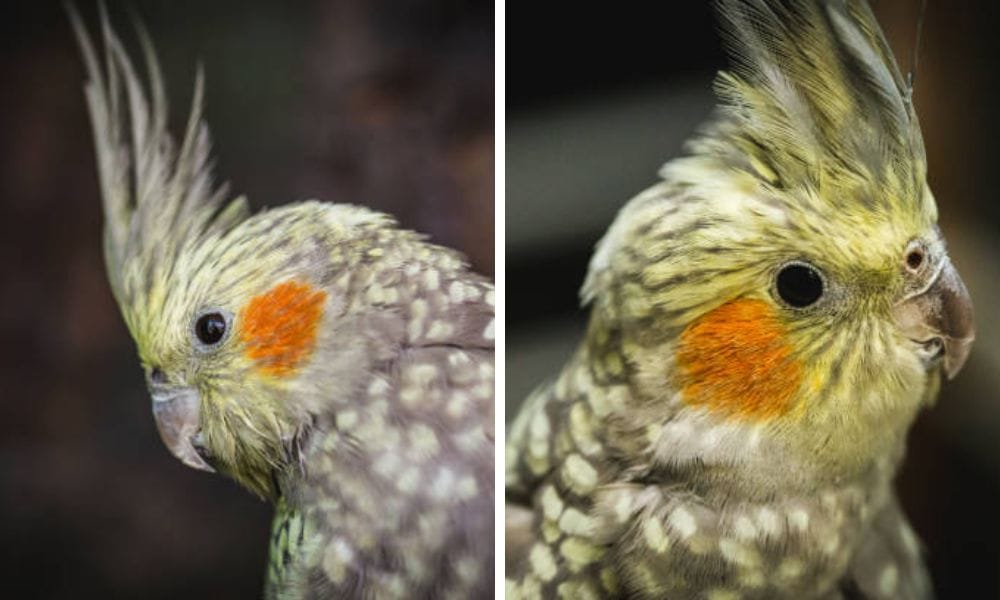
Recognizing Sex-Linked Traits
The pearl trait in cockatiels is a sex-related genetic mutation, making it easier to determine the sex of young birds. Male pearl cockatiel, or young males, typically lose their pearling after their juvenile molt, revealing a more solid grey body. In contrast, female cockatiels and opaline cockatiels maintain their laced appearance, often with a more yellowish infusion in their plumage.
The First Steps in Training
When you bring your pearly cockatiel home, it's essential to give them time to acclimate to their new environment. A comfortable flying cage, free from pesticide residue and with ample space, is crucial for their well-being. Initially, observed time outside the cage should be limited to ensure the bird feels safe and secure.
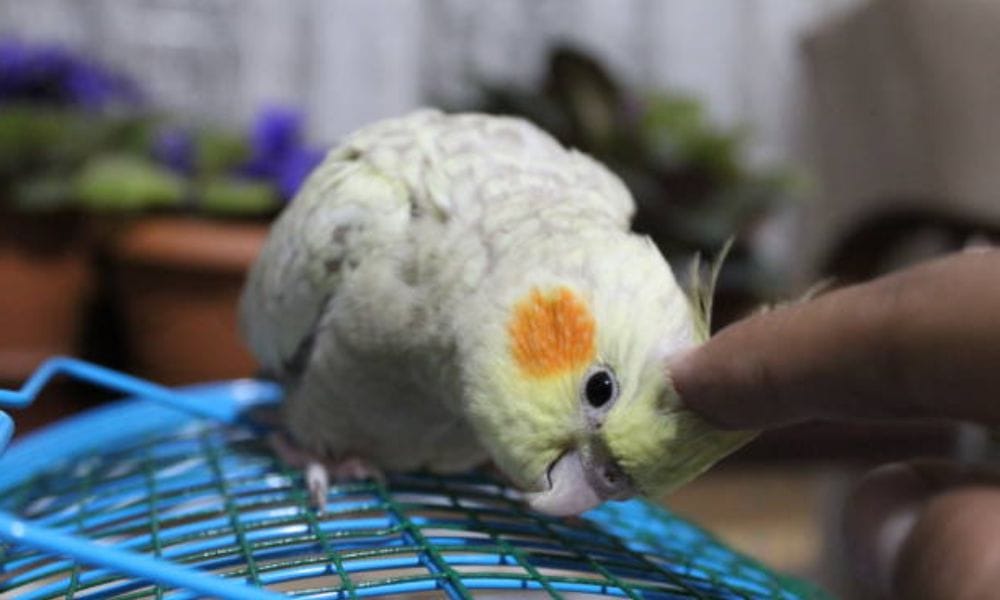
Building Trust with Your Bird
Trust is the foundation of any training program. Start by spending time near your bird's cage, speaking softly to them, and offering treats through the bars. Many breeders recommend using millet or spray milet as a reward, as it's a favorite among many birds. Over time, your cockatiel will associate your presence with positive experiences, paving the way for more direct interaction.
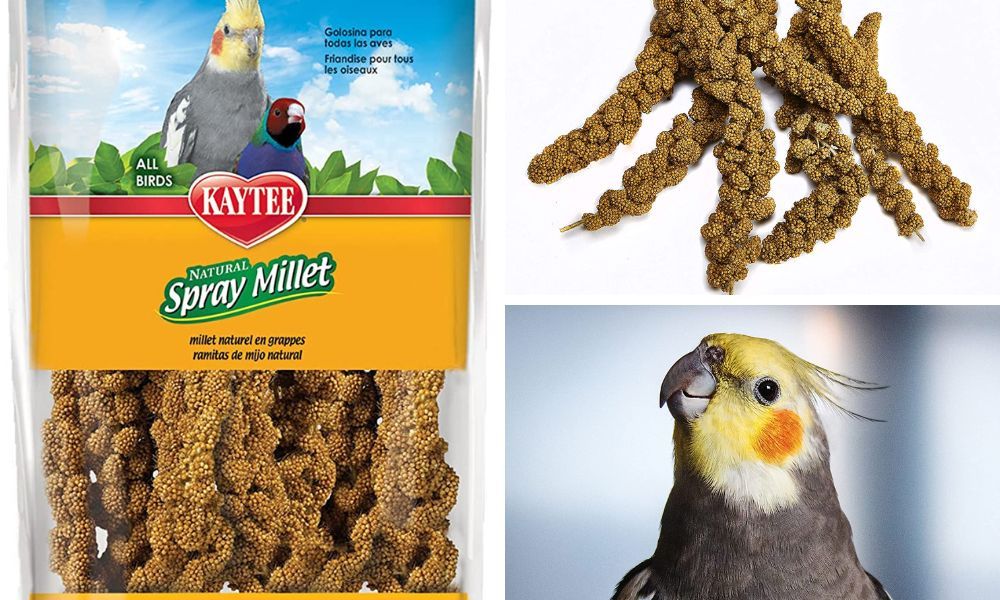
The Power of Positive Reinforcement
Positive reinforcement is a cornerstone of effective bird training. Rewarding your cockatiel with treats, praise, or playtime after they perform a desired behavior encourages them to repeat that behavior. It's important to reward them immediately after the action to create a clear association.
Teaching Basic Commands
Start with simple commands like "step up" to get your cockatiel to perch on your finger. Hold a treat in your hand and use it to lure your bird onto your finger, rewarding them once they comply. Consistency and repetition are key in reinforcing these basic commands. Keep on repeating these actions and stay consistent!
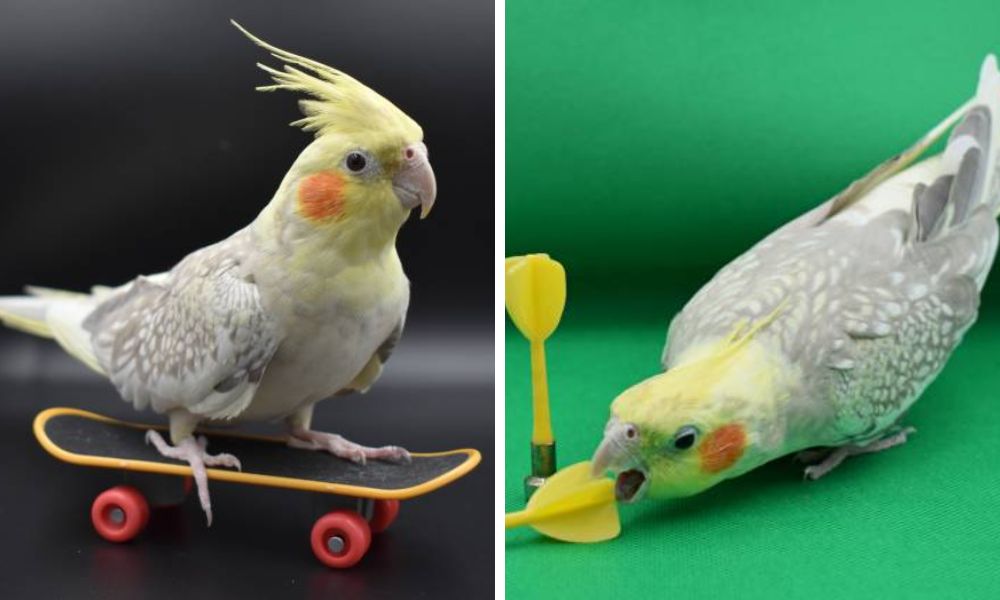
Avoiding Bad Habits
Cockatiels can develop bad habits, such as nipping or screeching, if not properly trained. To prevent these behaviors, avoid reinforcing them with attention. Instead, redirect your bird's attention to positive behaviors and reward them for being calm and gentle.
Socialization and Interaction
Cockatiels are social creatures and thrive on interaction with their owners. Regular playtime and socialization help prevent behavioral issues and strengthen your bond. Introduce new toys and activities to keep your bird engaged and stimulated.
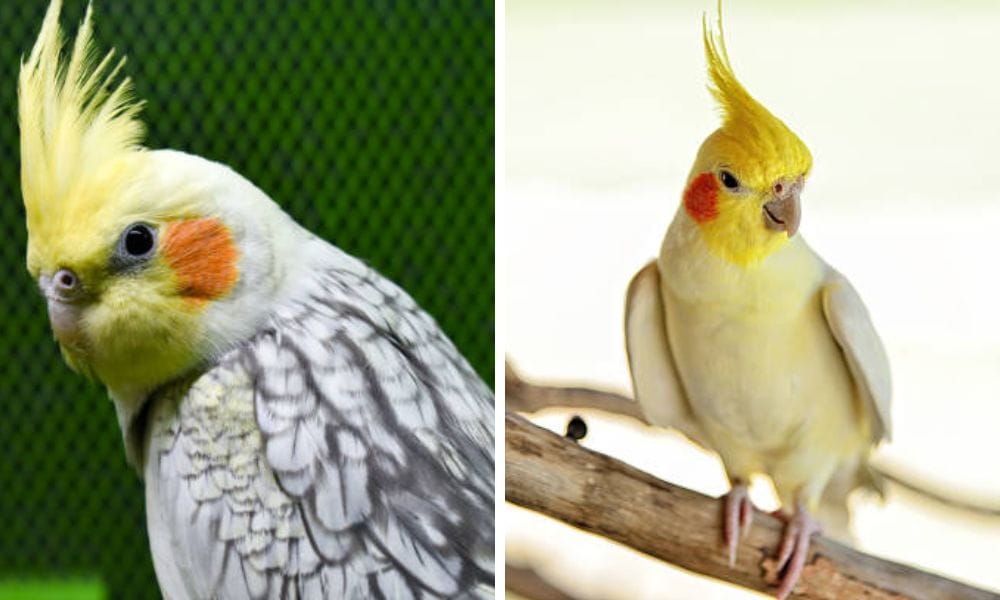
Handling and Touch
Gentle handling is crucial for building a trusting relationship with your bird. Start by petting their head and neck, areas they can't easily preen themselves. As your cockatiel becomes more comfortable, you can gradually expand to other areas of their body.
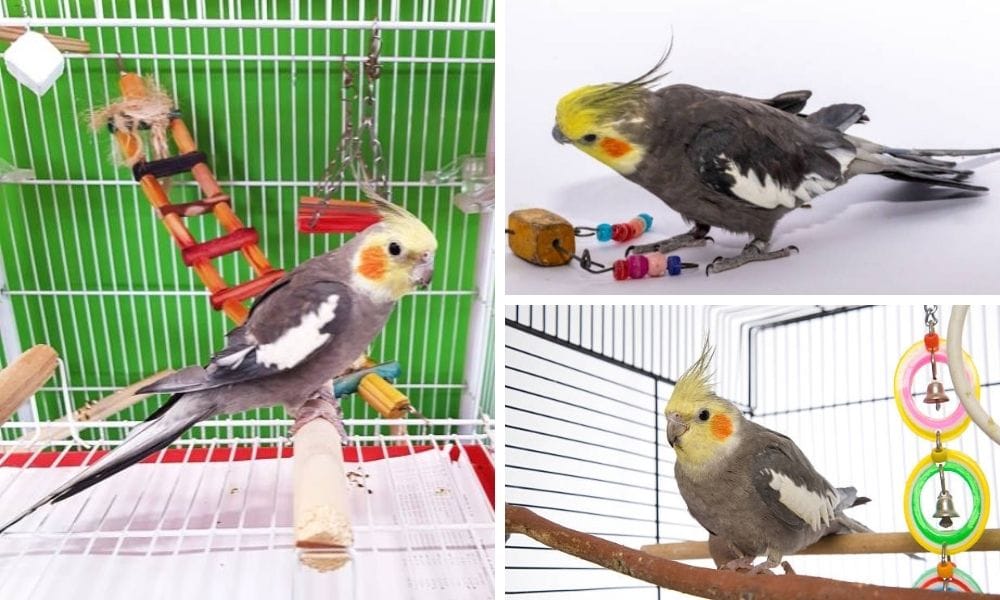
Understanding Pearl Cockatiel Variations
Pearl cockatiels are a visual treat with their unique feather patterns, and bird owners often marvel at the diversity within this mutation. The most pearl cockatiels exhibit a beautiful array of speckled or 'pearly' patterns across their back, wings, and chest. These patterns are especially prominent in females, as the sex-related genetic mutation tends to fade in males as they mature. The males may retain some pearling, but it's often less distinct, leading to a more gray body over time. This change can be a fascinating process for owners to observe, as their young cockatiels transition into adulthood.
The variations among pearly cockatiels are not just limited to the fading of their pearling. Some may display warm tans and cinnamon brown color, known as cinnamon pied pearly, while others might have a more white appearance with clear pied patterns. Bird enthusiasts also seek out the rarer silver pearls, which have a more subdued color pigment, giving them an almost mystical look. Each pearly cockatiel is unique, and specific breeders may focus on cultivating certain traits, such as the laced cockatiels with delicate feather edging or the pied whiteface with a striking white face and clear horizontal bars.
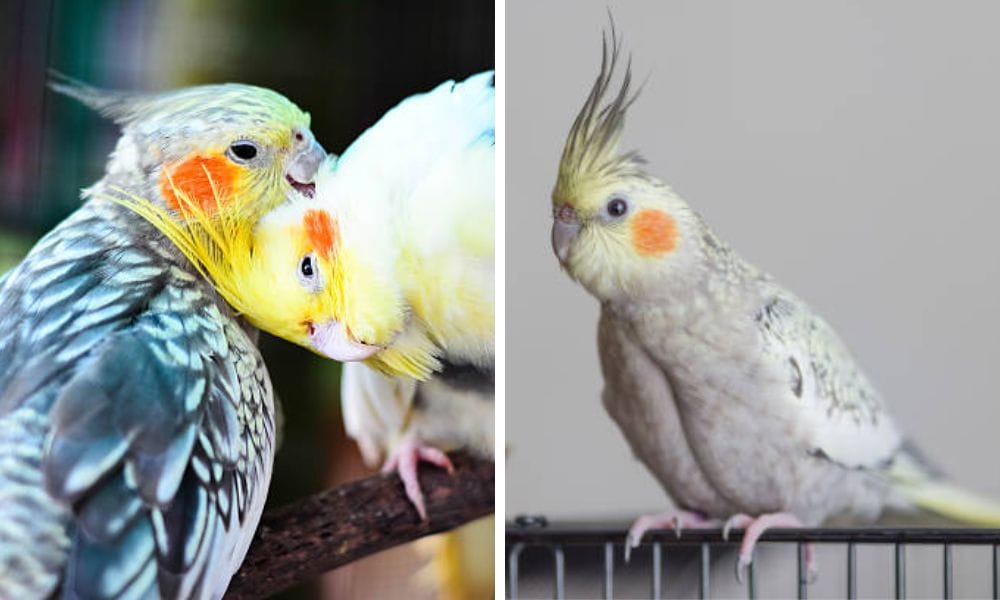
Deciphering the Orange Cheek Patch: A Marker of Health and Vitality
When observing your pearl cockatiel, the vibrancy of its orange cheek patch can be quite telling. This distinctive feature is not just a charming aesthetic; it's a potential indicator of your bird's overall health. A bright and vivid cheek patch often signifies a well-nourished and thriving cockatiel. Conversely, a dull or pale patch might raise concerns about diet or wellness. It's essential to monitor these subtle changes, as they can provide early warning signs that your feathered friend may require a dietary adjustment or a check-up with an avian vet.
In addition to health, the orange cheek patch plays a role in the social dynamics of cockatiels. These patches are used in communication, with brighter patches potentially being more attractive during mating displays. It's fascinating to watch your pearl tiels interact, observing how the intensity of their cheek patches might influence their social behavior. Keep an eye out for these interactions, and you'll gain a deeper appreciation for the complex social lives of these charming birds.
The Intricacies of Sex-Related Genetic Mutations in Pearl Cockatiels
Sex-related genetic mutations in pearl cockatiels can be a captivating subject for enthusiasts and breeders alike. For instance, the pearl pattern—characterized by scalloped feathers—is a sex-linked mutation, predominantly visible in females. After their first molt, males may lose this pattern, making it a unique identifier for sexing these birds. Understanding these genetic nuances is crucial for breeding purposes, as it allows breeders to predict the appearance of offspring and maintain the health of their bloodlines.
Moreover, the presence of wider pelvic bones in females can be another indicator of sex, although this method is less reliable than genetic markers. Breeders often look for colored bars on the underside of the tail feathers, which can be another sex-linked trait. These bars are typically more prominent in females. By combining observations of physical characteristics with knowledge of sex-related genetic mutations, breeders and owners can more accurately determine the sex of their pearl tiels, ensuring proper care and management of their avian companions.
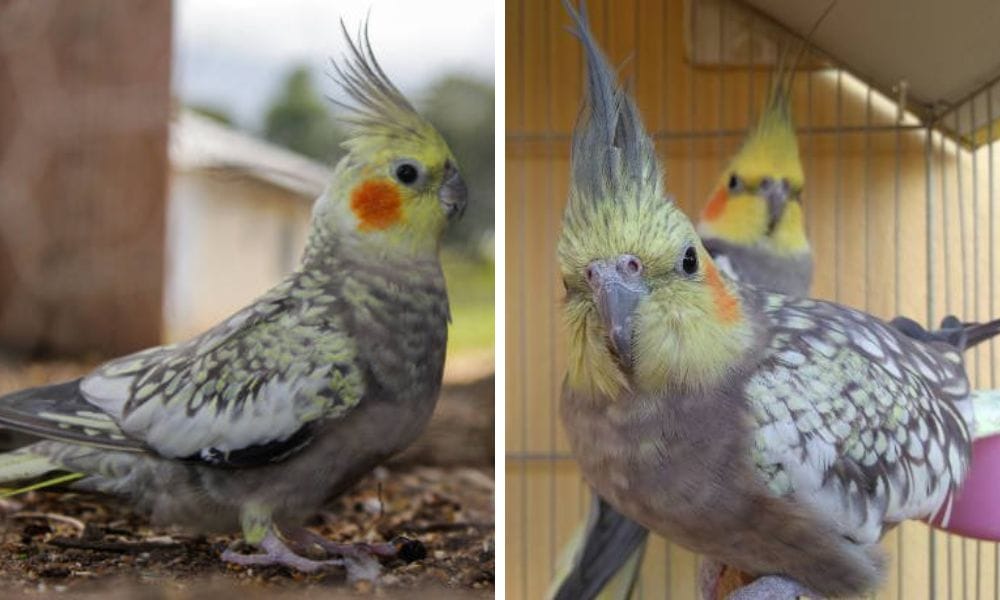
The Significance of Color in Pearl Cockatiels
Color plays a significant role in the appeal of pearl cockatiels, and understanding the genetics behind it can be quite intriguing for bird owners. Initially discovered in the 1960s, the first cockatiel mutation was the lutino cockatiels, characterized by their stunning yellow pigmentation and red or orange cheek patches. This mutation paved the way for other variations, including the pearly tiels, which combine the yellow crest and cheek patches with their distinctive pearled feathers. The yellowish face and cheek patches serve as an alarm clock for the bird's mood, often brightening or dimming in response to their emotions.
Wild cockatiels, the ancestors of our domesticated friends, typically have a more subdued color palette, with gray bodies and wings slightly edged in white. However, through selective breeding, we now have a kaleidoscope of colors, such as the white-faced cockatiels, which lack the yellow and orange pigmentation entirely, resulting in a sleek, white appearance. These white-faced varieties can also be pearl, creating a pearly whiteface variant that's highly sought after. The interplay of these colors and patterns not only adds to the aesthetic value of the birds but also helps owners and breeders identify sex-linked traits and predict the appearance of offspring.
Speech and Mimicry
While not all cockatiels will talk, many are capable of mimicking sounds and words. Encourage this behavior by repeatedly saying simple words or phrases to your bird. Reward any attempts at mimicry to reinforce the behavior.
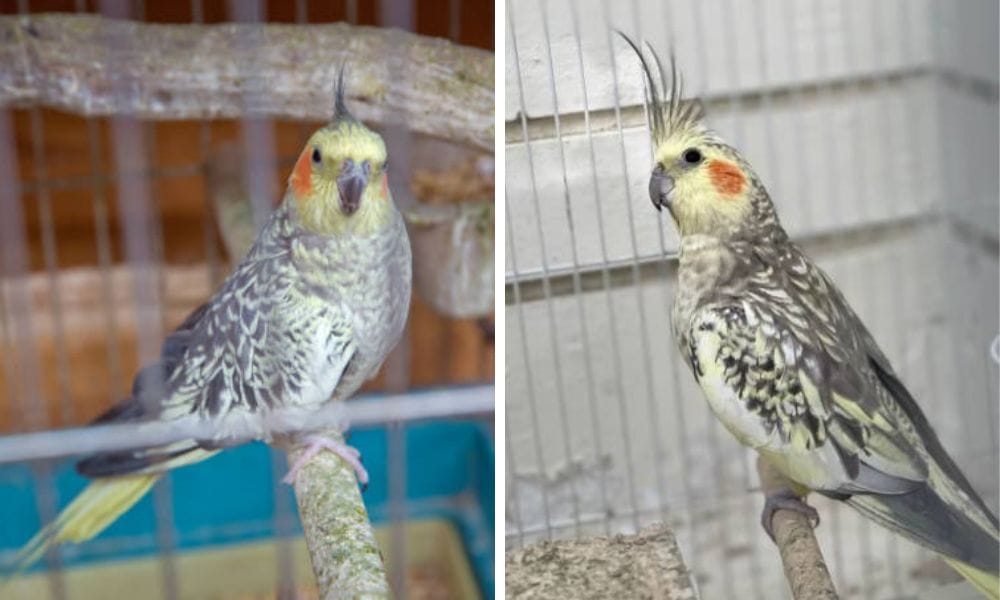
Flight Training
Flight training enhances your bird's physical health and mental well-being. Begin in a safe, enclosed area and use treats to encourage your cockatiel to fly short distances to you. Always supervise flight time to prevent accidents or injuries.
Health and Nutrition
A balanced diet is essential for your cockatiel's health and training success. Offer a variety of seeds, pellets, and fresh fruits such as apples, bananas and vegetables such as carrot, salat, peas etc to ensure they receive all the necessary nutrients. Monitor for signs of fatty liver disease, a common ailment in pet birds, and consult a vet if you notice any red eyes or nasal discharge.
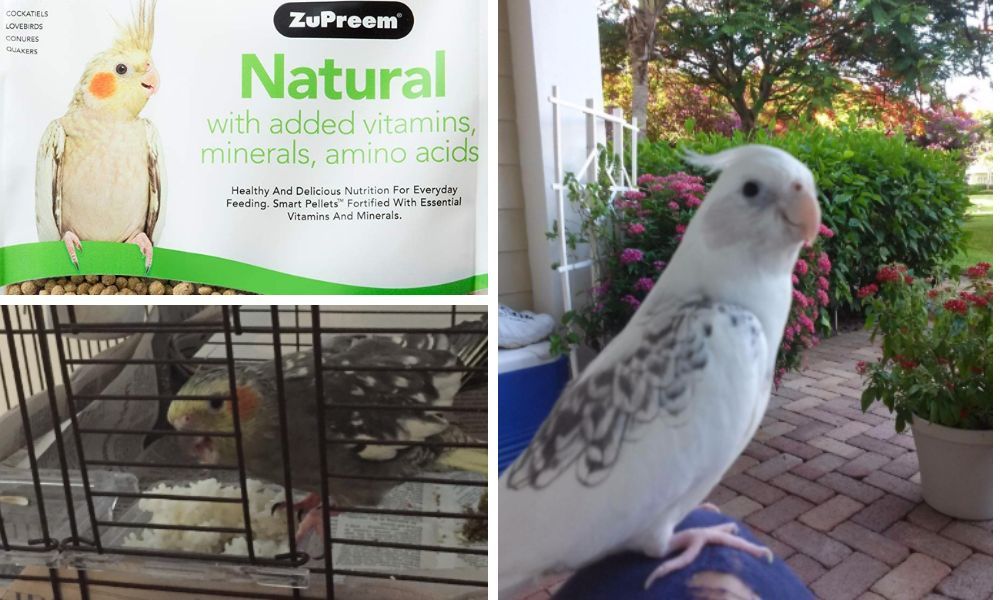
Recognizing Stress and Illness
Be attentive to your cockatiel's behavior and appearance for signs of stress or illness. Stress bars on feathers, changes in droppings, or a lack of energy can indicate that something is wrong. Early detection and treatment are crucial for your bird's health.
The Importance of Routine
Cockatiels, like many parrots, appreciate routine. Establish a daily schedule for feeding, playtime, and training sessions. This predictability helps your bird feel secure and can make training more effective.
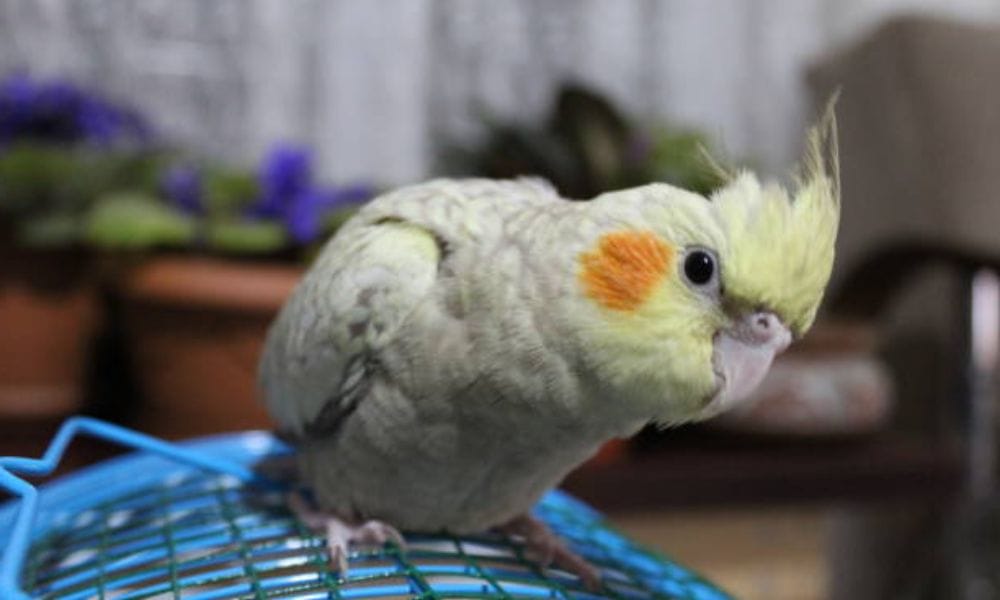
Dealing with Hormonal Changes
Be aware of hormonal changes that can affect your cockatiel's behavior, especially during breeding season. Increased aggression or nesting behavior may occur, and understanding these changes can help you adjust your training approach accordingly.
Advanced Training Techniques
Once your cockatiel has mastered basic commands, you can move on to more advanced tricks, such as retrieving items or spinning in a circle. Always use positive reinforcement and break down complex behaviors into smaller, manageable steps.
Preparing for Vet Visits
Training your cockatiel to be comfortable with handling can make vet visits less stressful. Acclimate your bird to being in a travel cage and touched by strangers to reduce anxiety during check-ups.
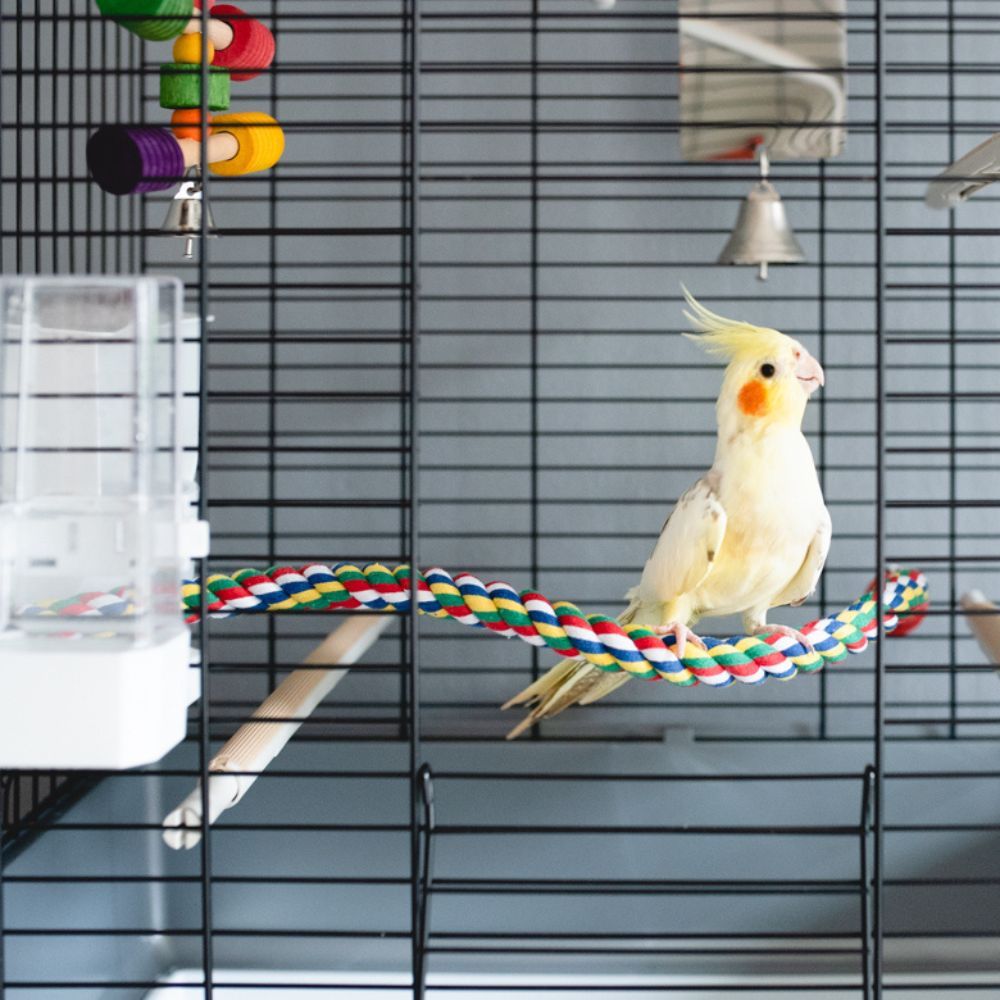
The Role of Cage Placement
The location of your cockatiel's cage can impact their behavior and training. Place the cage in a quiet, yet social area of your home to encourage interaction without overwhelming your bird with constant activity.
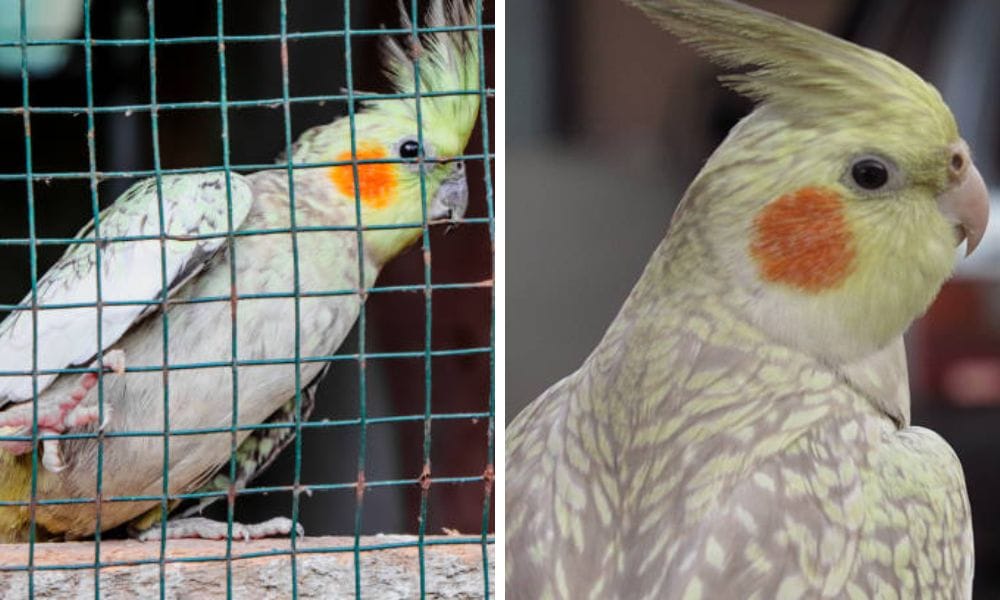
Addressing Feather Plucking
Feather plucking can be a sign of boredom, stress, or medical issues. Provide plenty of enrichment and consult a vet if you notice your cockatiel plucking their tail feathers or other areas excessively.
Summary
Training your pearl cockatiel can be a delightful and enriching experience for both you and your pet. By understanding their unique characteristics, employing positive reinforcement techniques, and maintaining a healthy environment, you can foster a deep bond with your feathered friend. Remember to be patient, consistent, and attentive to your cockatiel's needs throughout the training process.
FAQ Section
Q: How long does it take to train a pearl cockatiel? A: The time it takes to train a pearl cockatiel varies depending on the individual bird and the consistency of the training. Some birds may respond to training within a few days, while others may take weeks or months to fully learn new behaviors.
Q: Can pearl cockatiels learn to talk? A: Yes, some pearl cockatiels can learn to mimic words and sounds, although their ability to talk is not as pronounced as some other parrot species. Consistent repetition and positive reinforcement can encourage speech in cockatiels.
Q: How can I tell if my pearl cockatiel is stressed during training? A: Signs of stress in pearl cockatiels can include feather ruffling, panting, retreating to the back of the cage, or aggressive behavior. If you notice these signs, give your bird a break and try to identify and eliminate the source of stress.

